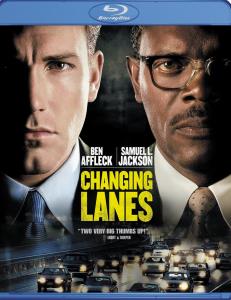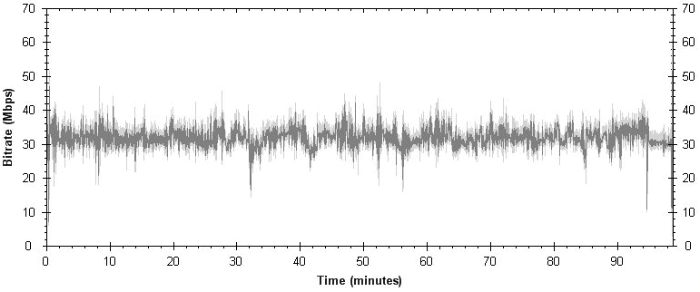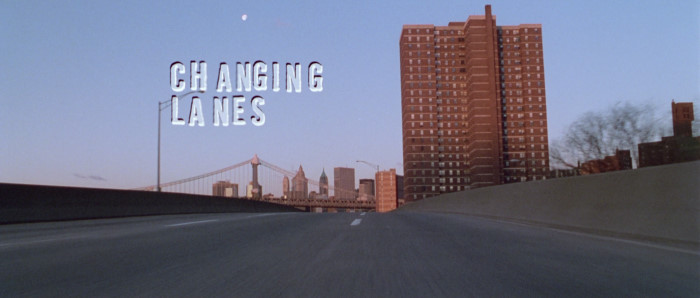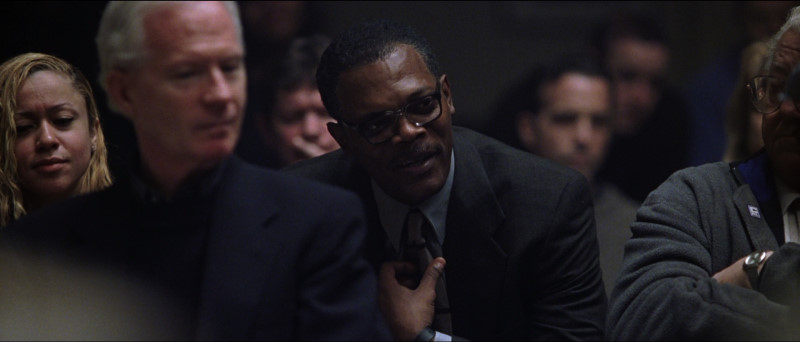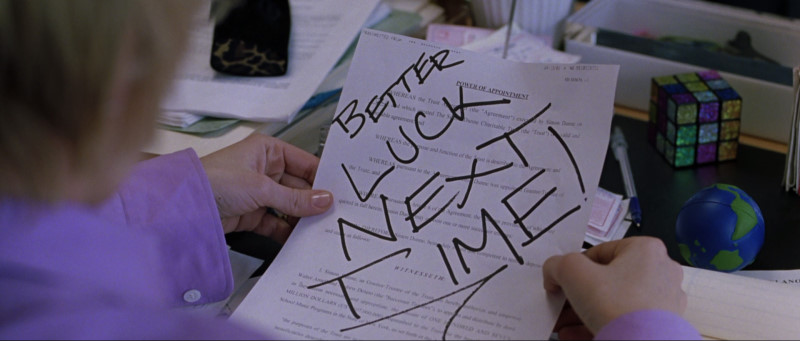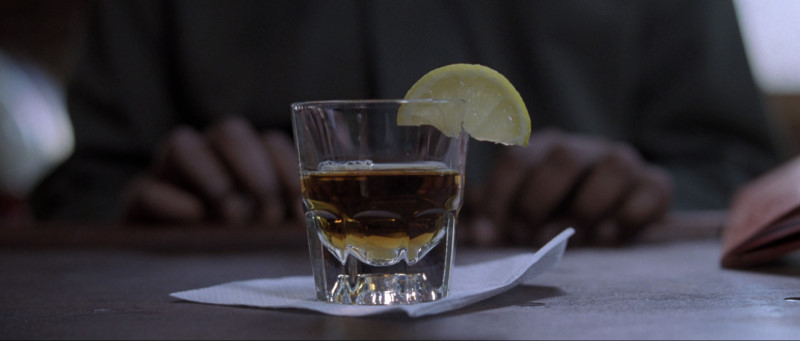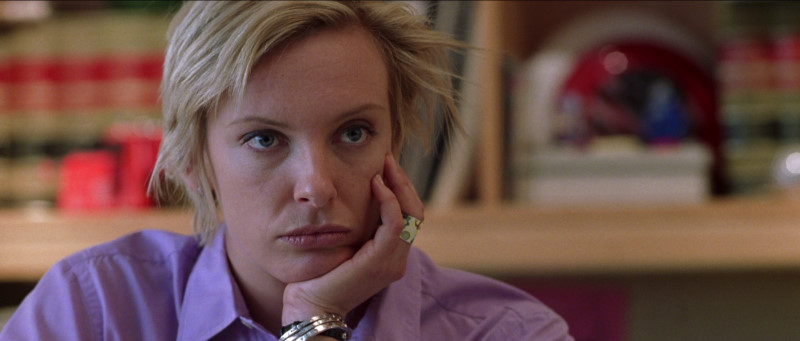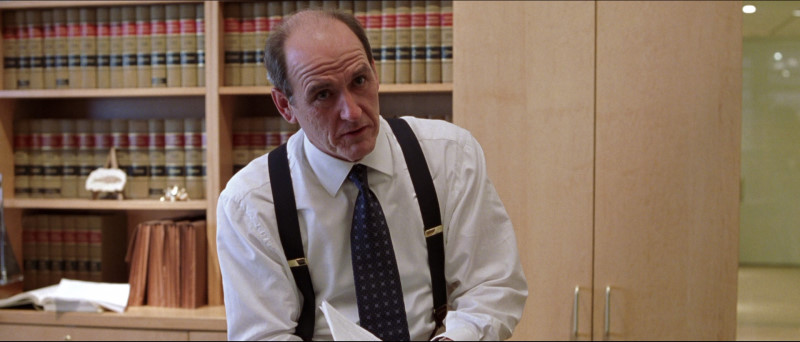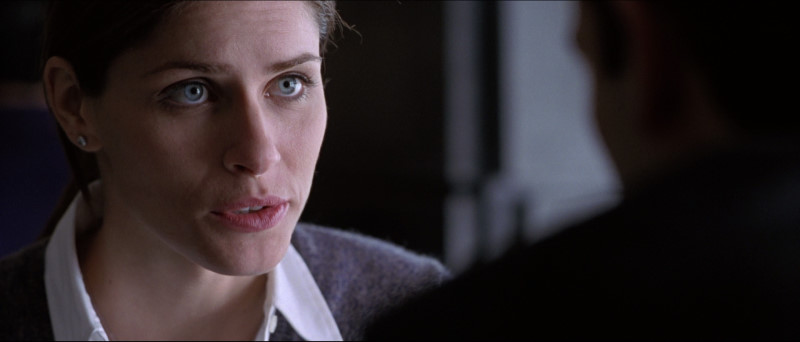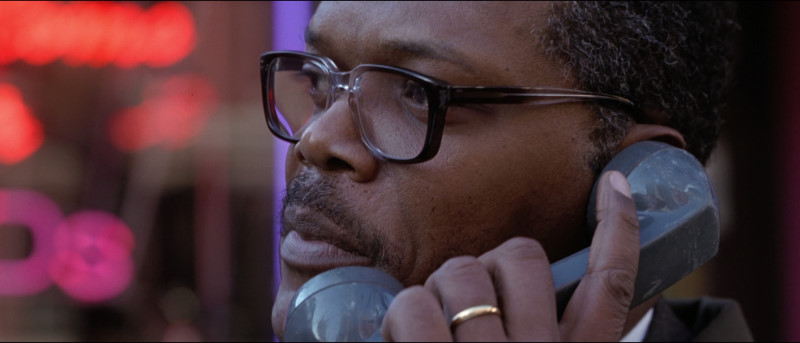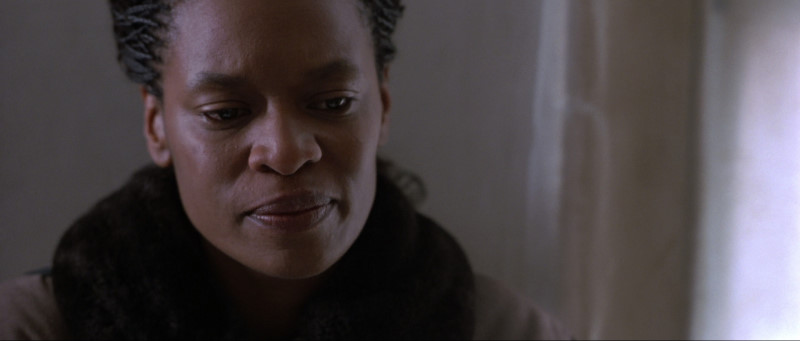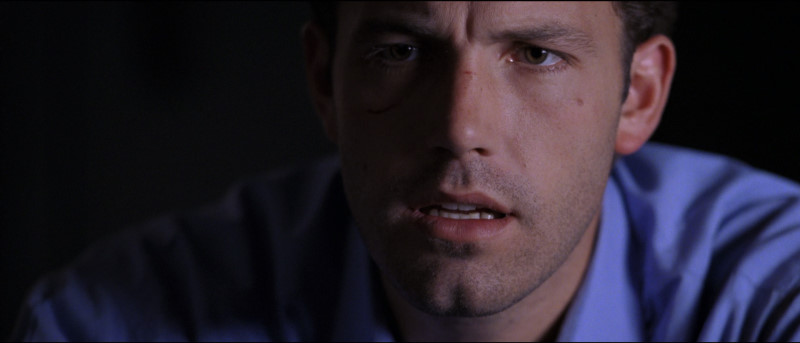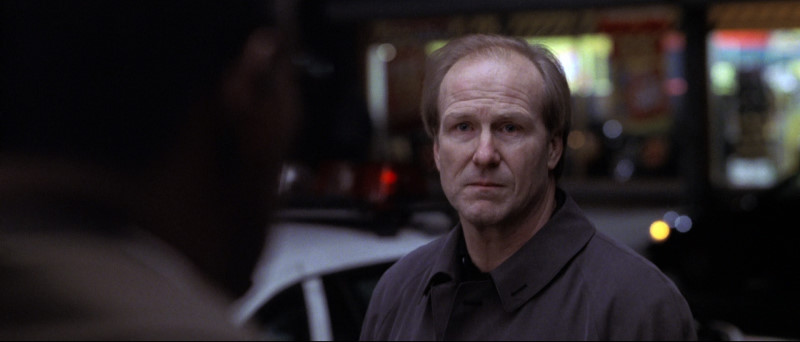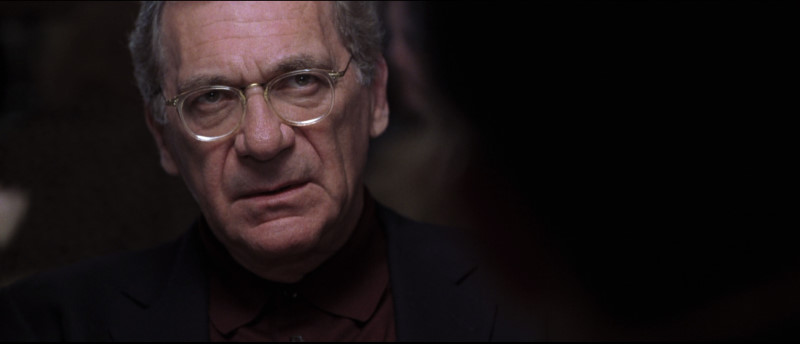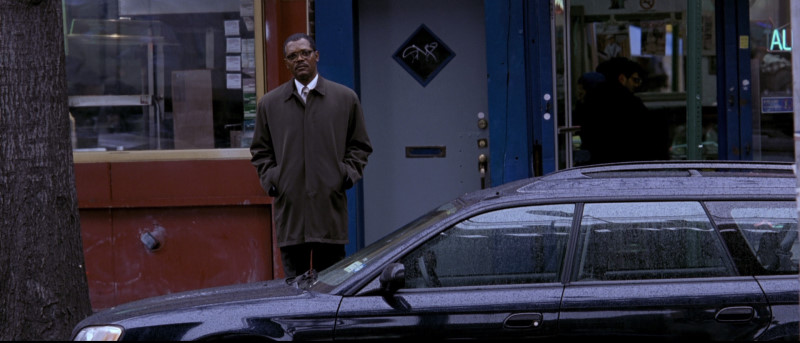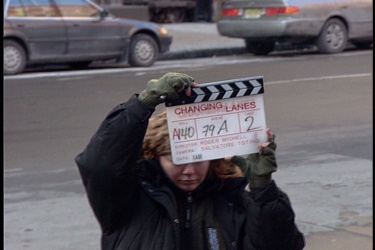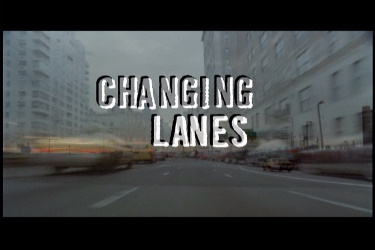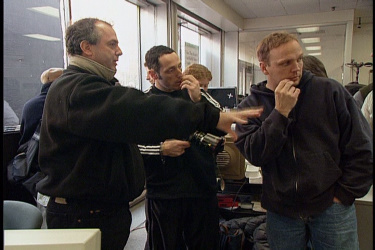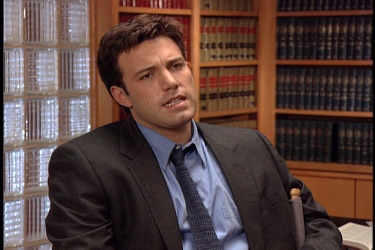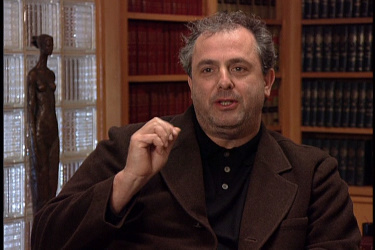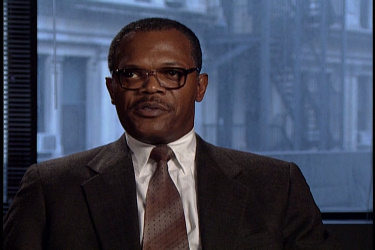:
Theatrical: Scott Rudin Productions
Video: Paramount Home Entertainment
Disc:
Region: ALL
(as verified by the
Momitsu region FREE Blu-ray player)
Runtime: 1:38:44.919
Disc Size: 34,156,902,688 bytes
Feature Size: 30,299,854,848 bytes
Average Bitrate: 40.91 Mbps
Chapters: 14
Case: Standard Blu-ray case
Release date: May 19th, 2009
Video:
Aspect ratio: 2.4:1
Resolution: 1080p
Video codec: MPEG-4 AVC Video
Bitrate:
Audio:
Dolby TrueHD Audio English 3585 kbps 5.1 / 48 kHz / 3585
kbps / 24-bit (AC3 Core: 5.1 / 48 kHz / 640 kbps)
Dolby Digital Audio French 640 kbps 5.1 / 48 kHz / 640 kbps
Dolby Digital Audio Spanish 640 kbps 5.1 / 48 kHz / 640 kbps
Dolby Digital Audio English 224 kbps 2.0 / 48 kHz / 224 kbps
/ Dolby Surround
Subtitles:
English (SDH), English, French, Portuguese, Spanish, none
Extras
• Audio Commentary by Director Roger Michell
• The Making of Changing Lanes – in SD (15:00)
• A Writer's Perspective – in SD (6:30)
• 1 Extended Scene - in SD (4:37)
• 2 Deleted Scenes – in SD (4:55)
• Theatrical Trailer - in HD
Comment:
Changing Lanes
touches on one of the core values of Western – and in
particular, American – society. Despite the images under
the opening credits (a car gradually drifting out of its
lane) and its sardonic marketing (“One wrong turn deserves
another”), Changing Lanes is not about changing
lanes; it’s about doing whatever is possible to stay in
one’s lane, no matter the cost. We all know what this feels
like: to be so focused on an objective in this or that
chapter of our life that we suffer nothing to derail us,
even when that derailment provides a much needed opportunity
for rethinking our goals.
Gavin Banek (Ben Affleck) and Doyle Gipson (Samuel L.
Jackson) at first glance appear to have little in common
except a pressing need to get to court on time. Banek is an
ambitious young attorney representing a client of dubious
intentions. Gipson is a recovering alcoholic trying to
reunify with his family. In their urgent haste, their cars
collide on New York’s F.D.R. Drive – not with any serious
damage. Each man, as most of us would, reacts to this
untimely collision with anger and despair. But for reasons
that become apparent as the story unfolds, Banek and Gipson
are driven to an irrational internecine duel, rationalizing
direct and oblique warnings from friends, family, associates
and conscience.
Changing Lanes
is projected as a thriller, and this is no mere marketing
ploy to engage audiences. When we take matters to the point
these men do, we experience our own personal dramas as
thrillers, eschewing personal safety and civil concern for
others. The secondary gain of such drama is to blind
ourselves to whatever may be the underlying motivation for
our personal obsessive path – not just the immediate
objective that engages our rage, but the apparently benign
objective concerning career and family. While at any number
of points in the film, we are likely to say that we wouldn’t
do such and such, or that we would do such and such else, it
is important to see this thinking as a rationalizing process
very similar to that of the protagonists, and to not let
ourselves get sidetracked as they do. Changing Lanes
is a respectable thriller; but it is even better at showing
us how we get mired into our own personal quicksand.
Leonard Norwitz (Len’s Views)
May 2nd, 2002
Image: 7/8
NOTE: The below Blu-ray captures were ripped directly from the
Blu-ray disc.
The first number indicates a relative level of excellence
compared to other Blu-ray video discs on a ten-point scale.
The second number places this image along the full range of
DVD and Blu-ray discs.
Like many movies shot on-location, differences in lighting
makes for a more varied experience than we would see in the
theater. This is due to the fact that the larger the image
the more the contrast evens out, and the smaller the image
the more it is exaggerated by comparison. In our home
theatre we are inclined to notice supportive edge and back
lighting, which gives a faux impression of extra
dimensionality compared to scenes that are relatively flat
lit. This difference is not apparent in the theater. If a
movie appears to be incoherent in terms of contrast on
video, it is likely only the result of scaling down the
image to home theatre proportions.
I've never thought that anything of significance is done to
deal with this discrepancy between theatrical and video
contrast, nor should it be, since there is no way to predict
the size of the consumer's display. This has not prevented
studios from a completely wrong-headed application of
edge-enhancement. (Their target audience couldn't care
less, so what's the point!) And in matters of noise
reduction, apparently, DVD and Blu-ray studios feel it is
their duty and right to deal with this, regardless of the
DP's intentions, instead of letting the end user dial it in
if desired. My feeling is that whatever the case in the
more broadly based DVD market, high definition transfers
should be left alone as much as possible. This does not
mean that restoration is not appropriate in many cases
(Where would I be without Coppola's new Godfather?)
or that a complete rethinking of contrast and saturation (as
with the recent Star Trek TV series) isn't a
worthwhile effort, even if not remotely like what we would
have or could have seen in 1968. (To clarify, here I am
only referring to the increased contrast and saturation not
the new special effects, which are a different matter
altogether.)
So here's the rub – and where my foot gets a little stuck on
its way into or out of my mouth: I have no memory whatever
about my theatrical experience of Changing Lanes nor
have I ever seen it on DVD, so what I am looking for on
Blu-ray is a convincing rendering of the movie, one
without distracting artifacts or enhancements, one that
keeps my attention in the movie, not on how it got
transferred to video. I expect black levels to be
consistent with the drama I'm watching, not pumped up to
appease my video requirements nor washed out (as in
Lionsgate's recent The Arrival). Changing
Lanes appears to done well for the most part, given how
and on what it was shot. I believe I see some noise
reduction in the more dimly lit scenes (as in the bar that
Jackson visits), and there's a little edge enhancement from
time to time, but I was not particularly disturbed by
either. Film grain is present, as it should be.
CLICK EACH
BLU-RAY
CAPTURE TO SEE ALL IMAGES IN FULL 1920X1080 RESOLUTION
Audio & Music : 7/7
On first hearing, the 5.1 Dolby TrueHD mix is clear, crisp
and immersive. The car crash is unspectacular, but
realistic enough. The rain rains, the auditorium is
cavernous, the P/A system that Affleck speaks on has a nice
resonant reverb, and small crowds in courtrooms are
claustrophobic. I find, however, that the upper mid-range
is always a little exaggerated, as if to try to make up for
a flat (in the sense of "uninteresting") audio mix. I could
have done without the boost.
Operations : 6
Paramount offers us a straightforward, easy to navigate,
unanimated and undetailed menu page. Moving in and out of
the extra features is accomplished easily. There's a nice
time line that comes up at the bottom of the frame on Pause.
Extras : 5
There's a weak attempt at supportive features with engaging
titles that, except for the director's commentary, turn out
not to amount to much (all imported from the DVD, by the
way.) The theatrical trailer is high def, but the other
bits are not, as expected. "The Making of Changing Lanes"
is a 15-minute piece with brief EPK interviews with cast and
crew and lots – I mean, lots – of feature film footage
interspersed. Much the same can be said for the 6-minute
"Writer's Perspective" with writers Michael Tolkin and Chap
Taylor. These guys have something to say here and they say
it well (e.g. that the story is about moral consequences),
but there is far too much material from the film for such a
short piece. There is an extended confessional scene for
Aflleck and two deleted scenes – in SD. The main
attraction, then, is Roger Michell's commentary, which is a
little dry, but informative about the film's production and
how different this job was for him than previous assignments
(like Notting Hill and Persuasion.)
Recommendation : 7
While the image quality may be only pretty good and not demo
material, it still is likely to be as good as can be hoped.
Audio is also satisfactory. The extra features are skimpy,
so the recommendation for Blu-ray largely falls on the
excellence of the film itself and the fact that this is the
best version of the movie on video. Recommended.
Leonard Norwitz
May 13th, 2009
![]()
![]()

![]()
![]()
![]()
![]()

![]()
![]()
